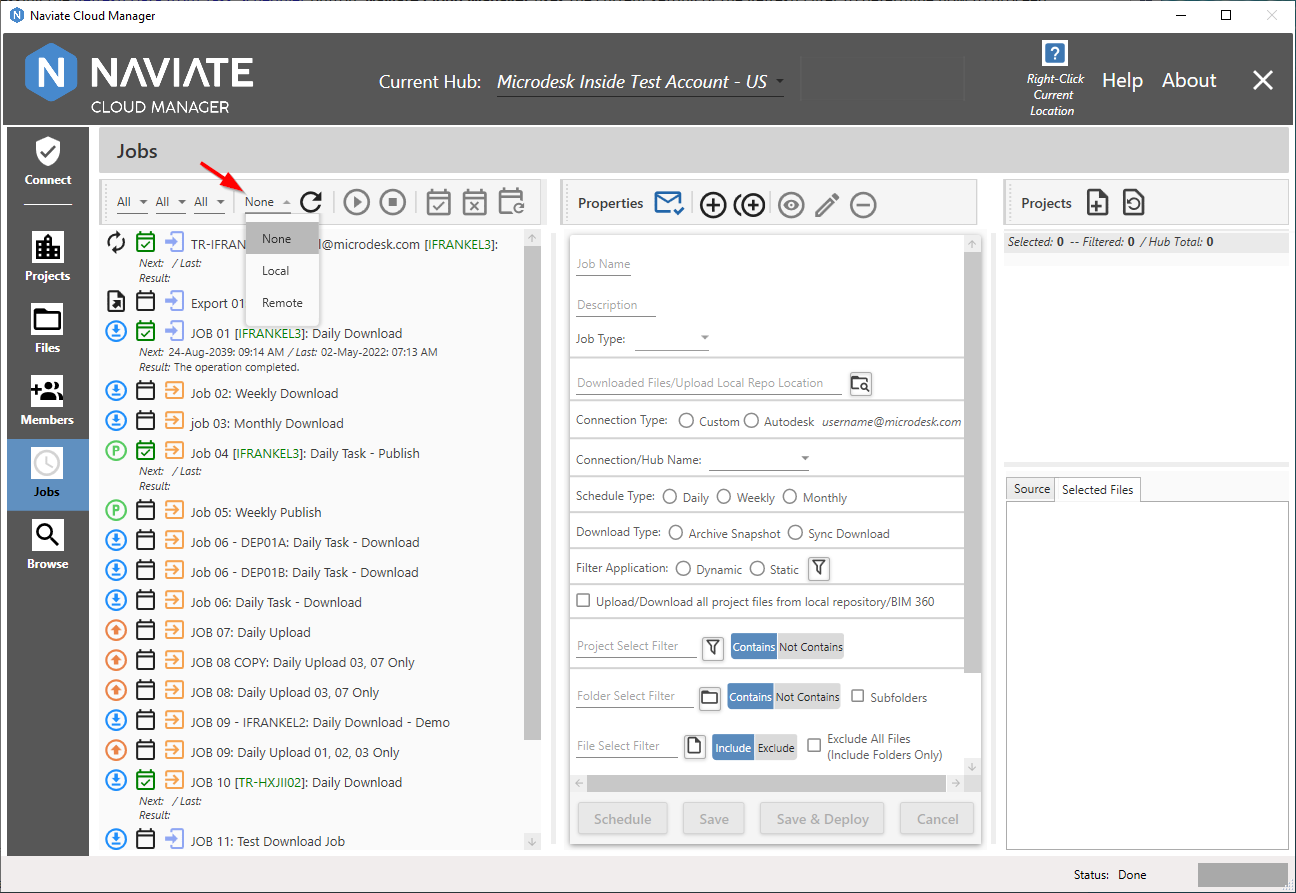Refresh Filter Settings
As stated previously under Status Display, the job listing viewer is able to include current information from the Windows Task Scheduler for each job deployed to a server. When pressing the Refresh Data from Task Scheduler button, Naviate Cloud Manager uses the current setting of the Refresh Filter to determine whether to access the server for each job to retrieve it's information.

By default, the Refresh Filter is set to Local. This default initial setting can be changed by modifying the application configuration file as described in Server Location Refresh Type Initial Setting. Additionally, as shown above, the filter dropdown list provides additional choices which may be selected at any time. These settings are as follows:
None — No server access at all is performed. Server status information for each deployed job is either left blank, or retrieved from the cache, if available. This will always be the fastest of the three possible refresh options.
Local — Each job deployed to the local server retrieves its information from the current machine. No Remote server access is performed. Since this all happens locally and no access over the network is performed, this generally happens very quickly.
Remote — Job status information is retrieved for all deployed jobs from each job's assigned server, whether local or remote. Remote access is the most time-consuming of the three options. Speed of retrieving the information depends on many factors — including but not limited to — how many servers need to be accessed; each server's CPU and memory; server load; network speed and current load; etc.
When the Refresh Button is pressed, the Job listing data is refreshed from the data store to ensure the most recent changes appear. According to which of the above three options the Refresh Filter is currently set, the server status display data will either be retrieved; the default setting will be used; or the most recent data contained in the cache will be displayed. For more information regarding the cache contents and operation, refer to Server Status Info Caching, in the following section.